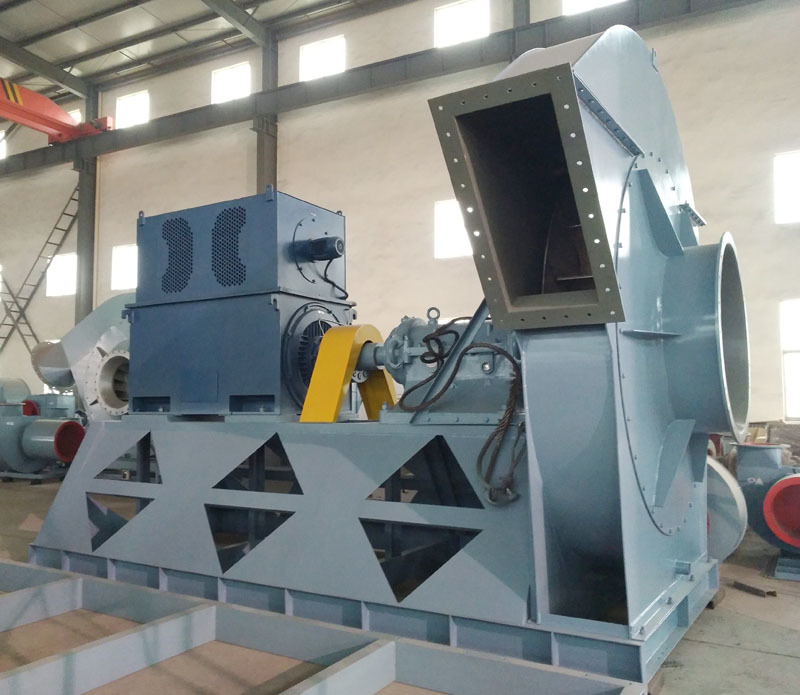What are the advantages of stainless steel fans?
Release time:
2023-01-18
Stainless steel fans are generally used for high-pressure forced ventilation in industries such as smelting furnaces, glass, electroplating, ceramics, battery farming, and radio. They can also be widely used for material transportation in processing industries like grain, feed, and mineral powder. Additionally, they are suitable for supporting use in equipment like carton machinery and tempered glass equipment. The impeller features a multi-wing single-inlet centrifugal design, made from high-quality galvanized or cold-rolled steel plates, with blades designed based on aerodynamic principles. The impeller consists of 10 backward-inclined airfoil blades, a curved front disc, and a flat rear disc.
Stainless steel fans are generally used for high-pressure forced ventilation in industries such as smelting furnaces, glass, electroplating, ceramics, livestock batteries, and radio. They can also be widely used for material transportation in processing industries like grain, feed, and mineral powder. They are suitable for supporting use in equipment like carton machinery and tempered glass equipment. The impeller adopts a multi-wing single-inlet centrifugal design, made from high-quality galvanized or cold-rolled steel plates, with blades designed based on aerodynamic principles. The impeller consists of 10 backward-inclined airfoil blades, a curved front disc, and a flat rear disc. It is specifically designed and manufactured for the chemical industry and equipment that is subject to corrosion from toxic gases when using ordinary steel. It not only achieves ventilation but also significantly extends the service life. It features high strength, rust resistance, corrosion resistance, low aging, and low noise, making it suitable for exhaust and ventilation in high-temperature or acidic gas environments, as well as for general factory buildings.Stainless Steel FanIt is specifically designed and manufactured for the chemical industry and equipment that is subject to corrosion from toxic gases when using ordinary steel. It not only achieves ventilation but also significantly extends the service life.

The stainless steel fan was welcomed as soon as it hit the market. With the structural characteristics of the fan equipment itself, it has won the favor of many and better meets the needs of different users. What are the advantages of this fan? Let's take a look together.
Advantages of Stainless Steel Fans:
1. The impeller uses a multi-wing single-inlet centrifugal design, made from high-quality galvanized or cold-rolled steel. The blades are designed based on aerodynamic principles. The impeller consists of 10 airfoil blades, a curved front disc, and a flat rear disc. The stainless steel fan is made from high-quality steel plates, has high strength, good stability, and has undergone strict dynamic and static balancing. It has good air performance, high efficiency, and runs smoothly.
2. The motor uses a high-temperature resistant motor, and the high-temperature fan's flow parts are made from temperature-resistant materials, ensuring stable cooling structure performance. Compared to other boiler induced draft fans, it has advantages such as simple structure and easy maintenance.
3. The air inlet uses a converging streamline vortex contraction form, resulting in low air volume loss and high efficiency for high-temperature fans.
4. The casing and motor are connected using metal castings. Cooling fan blades are mounted on the motor's shaft head. The outer wall of the metal casting is equipped with inlet and outlet pipes for cooling the metal casting and shaft head, allowing the motor to operate normally at high temperatures.
Stainless Steel FanIt is specifically designed and manufactured for the chemical industry and equipment that is subject to corrosion from toxic gases when using ordinary steel. The stainless steel fan not only achieves ventilation but also significantly extends the service life. It has high strength, rust resistance, and durability. It has good corrosion resistance, is not prone to aging, and operates with low noise, making it suitable for exhaust and ventilation in high-temperature or acidic gas environments, as well as for general factory buildings.
Related News






